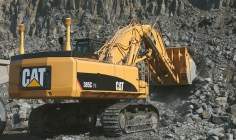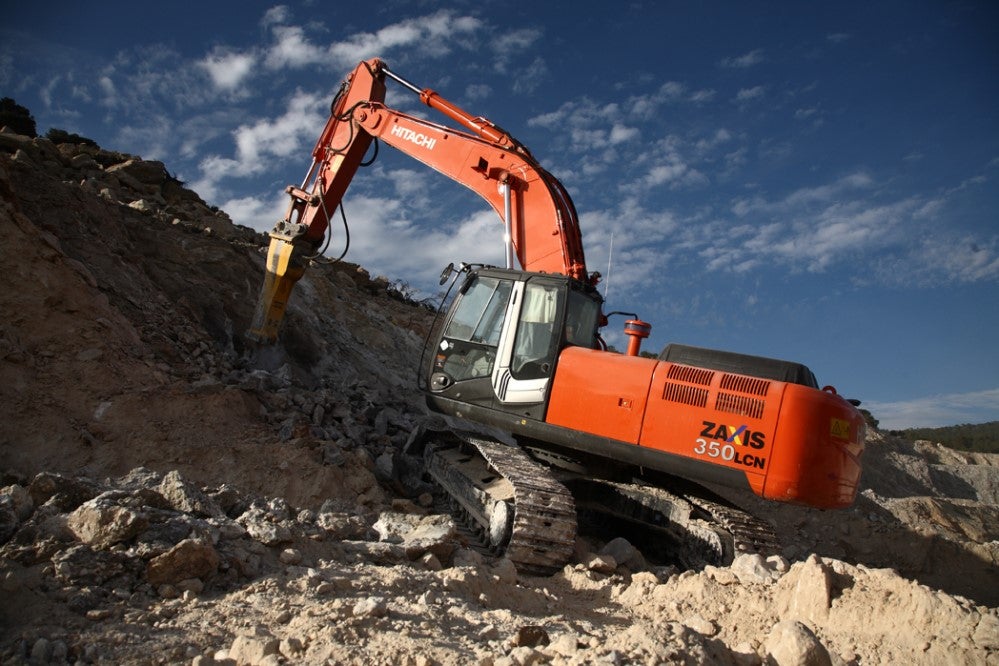
Although the worst may well be over, the depressed European market in plant and construction is picking up in a patchy way across the continent. Paul Golden reviews the various markets and speaks to some of the industry’s key insiders
Despite indications that the worst of the downturn in the European construction industry may be over, lease companies are no more than cautiously optimistic for growth in 2014.
The most recent EuroConstruct review of output forecasts for the construction industry in 15 countries across western Europe estimated that the construction sector would expand by 0.9% this year and by 1.7% in 2015.
These figures don’t tell the full story, though. For example, Ireland is expected to grow strongly this year and next (9.8% and 8.2% respectively) whereas Spain is predicted to suffer a further fall in 2014 (down 6.7%) and to record only modest expansion of 0.5% in 2015. The UK and Norway are among those countries expected to experience reasonable growth (2.4% and 3.1% in the UK, 3.6% and 3.7% in Norway).
One of the most notable findings of the EuroConstruct research was the extent to which the European construction industry was affected by the global financial crisis. Between 2007 and 2013, the volume of construction output fell by just over a quarter.
The report Construction Equipment Market – Global and China Forecast, Market Share, Size, Growth and Industry Analysis 2011-2017 published by Transparency Market Research observes that infrastructural development is driving demand for construction machinery and related equipment.
How well do you really know your competitors?
Access the most comprehensive Company Profiles on the market, powered by GlobalData. Save hours of research. Gain competitive edge.

Thank you!
Your download email will arrive shortly
Not ready to buy yet? Download a free sample
We are confident about the unique quality of our Company Profiles. However, we want you to make the most beneficial decision for your business, so we offer a free sample that you can download by submitting the below form
By GlobalDataBut while the report states that a growing numbers of residential and non-residential construction projects and infrastructural renovation are expected to drive demand for construction equipment in developed economies, it expects demand in Europe to remain flat over the next few years despite a modest improvement in 2012 compared to previous years.
There have been some positive developments in Europe over recent months. In April the European Fund for Southeast Europe (EFSE) advanced a 20m loan to Yapi Kredi Leasing (the largest leasing company in Turkey in terms of new business volume) to enable it to offer leasing finance solutions for construction equipment. Half the funds have been earmarked for priority development regions.
At the start of the year, BNP Paribas Leasing Solutions announced it had extended its joint venture with CNH Industrial, which has provided leasing and financing to CNH Industrial customers in the European construction equipment sector since 1997, financing more than 40,000 customers in nine countries for a total outstandings of 1.7bn.
Last August, a decreto del fare or legislative decree aimed at supporting the revival of the Italian productive sector was converted by the parliament into law and fully enforced. Among the numerous interventions, it provides micro, small and medium-sized enterprises with access to facilitated financing (including leasing) to invest in construction machinery and equipment and is expected to facilitate credit granting, mitigating cost to beneficiaries and risk to lenders, including leasing companies.
In an interview with Leasing Life earlier this year, Frank Stienstra, CEO of ABN Amro Lease referred to a 25% decrease in bankruptcies in the Netherlands during the first quarter of 2014 compared to the same period last year, with the construction sector in particular benefitting from increased business confidence.
In Germany, De Lage Landen country manager Thomas Stahl observed that lessees are demanding immediate assurances of credit. "Waiting is no longer an option, at least not in the construction machinery sector. These days, procurement is on demand – the equipment is leased as soon as the order comes in. Customers’ demands are becoming increasingly specific and they expect more and more flexibility. However, this is also an opportunity since service features can be used to compensate for the decline in the market prices for used lease goods."
However, the picture is not consistent across Europe – for example, Ivars Smits, head of sales finance at Baltic Nordea Finance predicted stagnation in construction sector lease activity in that region last year. Deutsche Leasing manager Georg Hansjuergens spoke of a drop in volumes in Austria and some major defaults in the construction sector, while Patrick Zehetmayr, head of client coverage at Erste Group Immorent said Romanian construction leasing had not regained the impetus lost during the global financial crisis.
According to Martin Nixon, head of asset finance at United Trust Bank, while there are some encouraging signs from the UK construction industry, it’s far from clear whether this positive sentiment will carry through the remainder of 2014 and beyond.
"We have seen some growth in the UK plant and construction equipment leasing market," Nixon says. "Lack of housing and the effect of limited supply on prices is a major issue in the UK at the moment, but whether that will feed into a surge in the development of new homes is debatable. House builders are finding it slightly easier to obtain planning consent, but it is unclear whether this can be translated into increased building activity."
Finance & Leasing Association data supports Nixon’s view that asset finance new business is on the rise, with the FLA reporting that finance for plant and machinery experienced the strongest growth in the first quarter of this year, up by 21% compared to the first three months of 2013.
When the UK economy went into recession in 2008 and 2009, access to funding was clearly an issue for many businesses and captive lessors in particular had to raise their game to maintain their sales volumes. Nixon reckons this means captives increased their market share relative to before the downturn and says this higher market share has been maintained since the UK emerged from recession, with captives accounting for a high percentage of the new equipment lease market.
Nixon says: "We probably fund more used equipment rather than new, partly because there is still a lot of subsidised finance in the sector, but also because our pricing matrix is better suited to the mid-market and where transactions have to be carefully structured. Our asset finance business has been operating since 2009 but we have really only focused on plant and construction equipment for the last three years. However, we expect to grow our book by at least 30% in 2014."
He observes that business is extremely rate-driven. "Pricing has become even more competitive and the availability of subsidised finance on new equipment has probably never been higher."
United Trust Bank does a lot of business in the civil engineering and general contracting end of the market, which covers everything from small plant (mini-excavators, dumpers and generators etc) to mobile cranes and bespoke construction equipment.
"All our business introductions are done through brokers, so we will target those brokers who offer the greatest potential for bringing new business," explains Nixon. "Any broker that specialises in plant and construction equipment is on our radar.
His view of the prospects for the UK construction equipment lease market in 2014 is that the market will grow steadily. However, there have been a lot of new entrants into the market over the past 12-24 months, so even though it might be a slightly bigger market in terms of overall revenue there is increased competition.
"Because it is a relatively easy market to enter we will see new lessors emerging. There is a tried and tested formula for depreciation and resale values, so the objective is to distinguish yourself from the competition – you cannot compete on pricing alone because that approach will only work for a certain length of time. This is a very cyclical market, so you need to have credibility and to be able to convince brokers that you are in it for the long haul."
De Lage Landen observes that the European construction equipment leasing market is closely following the performance of the general construction equipment market, which is now on its way to recovery. However, sales are still significantly below historic levels as business confidence has not yet fully recovered.
Of course, the extent to which the market grows over the next few years will depend largely on the economic prospects for Europe. The expectation is that the majority of European countries will experience growth in 2014, but De Lage Landen points to significant differences, especially when compared to pre-crisis market demand.
Some countries (Germany and Norway, for example) have emerged strongly from recession and are already achieving sales levels above the historic average, whereas Spain, Ireland, Portugal and Italy are still struggling, although it is believed that at least some of these markets have bottomed out.
One of the most significant developments in this market over the last 12 months was that following a too-rapid recovery in 2010-2011, companies needed to replace their obsolete equipment, but market demand and business confidence then declined slightly in 2012-2013 due to economic uncertainty, a severe winter, lack of financing in the construction sector and limited government investment.
During the global financial crisis De Lage Landen noted an increasing number of finance companies affiliated to equipment manufacturers who wanted to secure financing for their customers. However, it says that by maintaining its commitment to the construction industry it has managed to grow its construction equipment leasing portfolio over the last few years.
Historically, construction equipment manufacturers have seen the benefits of offering finance to their customers, either through an in-house captive company or through a partnership with a vendor finance provider.
As financing within the construction sector dried up significantly following 2008, the majority of manufacturers realised how crucial finance was as a part of their value proposition and opted for partnerships with vendor finance companies. De Lage Landen has closed a number of partnerships with equipment manufacturers over recent years and believes that in the long term, all equipment manufacturers and dealers will have finance solutions in order to be able to offer their clients a full solution package and tangible added value.
The company acknowledges that there have been significant variances in how various equipment types have performed over the last five years, influenced by differences in machine preferences in different countries.
One trend it has identified over the last couple of years is an increased amount of operating leases within the construction sector, particularly in the UK. Historically, approximately 90-95% of agreements were lease or hire purchase.
De Lage Landen sees increasing demand for operating lease as an opportunity and is working to show customers within the construction sector how leasing is more about achieving full utilisation of their assets. It believes that customers are already seeing the benefits of operating leases, including full maintenance and fixed costs.
Another growing demand from customers is for increased flexibility in lease contracts, as customers want to outsource a part of the risk of owning equipment, which is where providing flexible solutions tailored to the construction sector has represented an opportunity to win business. The company says its approach is based on extensive knowledge of the construction industry and is supported by partnerships with selected construction equipment manufacturers and dealers. Credit also remains a challenge, both for end-users and dealers.
De Lage Landen collaborates closely with equipment manufacturing partners to promote leasing as a beneficial way of acquiring equipment.
This includes the provision of finance training to the manufacturer and dealer sales teams, offering special finance promotions, participation in trade shows and taking part in speaking opportunities during industry events.
This is part of an overall strategy of enabling customers to acquire equipment on a monthly rate including service, insurance and other components – a model that’s already well established in other leasing markets.
As for whether the company is optimistic about the prospects for the European construction equipment lease market in 2014, De Lage Landen says it expects some expansion. Its prediction is for marginal growth over the remainder of this year and it also forecasts that end user financials will improve in 2014.







